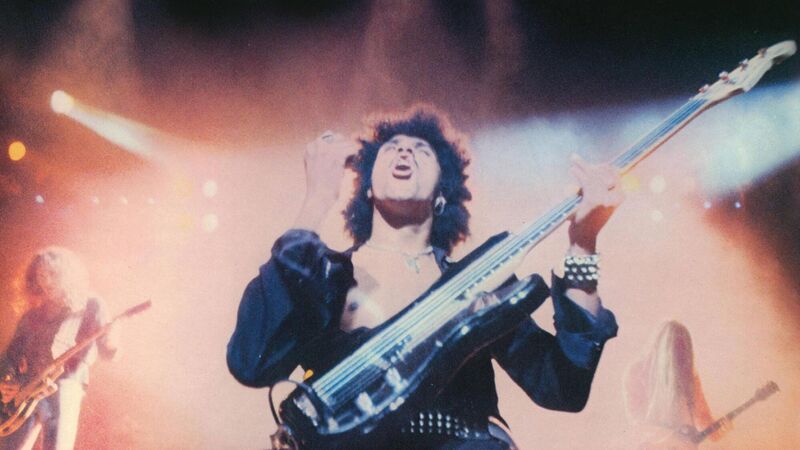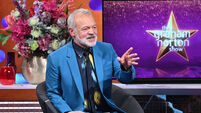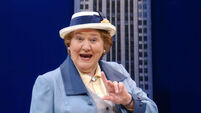Tom Dunne: Live and Dangerous stands testament to Thin Lizzy's greatness

Phil Lynott on the cover of Thin Lizzy's Live and Dangerous.
Thin Lizzy’s Live and Dangerous celebrates its 45th anniversary this year. It remains imperious, the first recorded proof that an Irish band could lay claim to being the “greatest rock band in the world.” Others would follow, but they had this to aspire to: a template and a band at the peak of its powers.
But was it even live? Hard as it might be to believe, rumours have always persisted that it was mostly re-recorded. This was not helped by its producer Tony Visconti once saying the only live parts were, “the crowd noises.” The band have rubbished this, but the mystery persisted.
It is reissued now in eight CD format. One of those is what was the original double album, the other seven are the shows that album was culled from; three from the Hammersmith Odeon, November 1976; two US shows in October 1977; and one from the Rainbow, London in March 1978.
The re-issue claims to “put to bed” the myth of the overdubbing. But does it? You could make a case to say that Thin Lizzy were lucky to even get to record this. Their early years were shambolic and almost hit free. Formed in 1970 and signed to Decca almost immediately, ‘Whiskey in the Jar’ had been a surprise and unlikely hit. The three albums that followed were not.
The threat of being dropped hung heavy in the air and at a gig on NYE’s eve of 1973. Eric Bell left the band dramatically, walking off stage mid-song. This coloured Phil’s view of working with just one guitarist. In future, he thought, I will have two, in case one leaves!
Then, 1974 was a low point. Gary Moore replaced Bell but only briefly. To fulfil a German tour the band had to recruit guitarists John Cann and Andy Gee. How many fans saw that line up? The tour was poor, and Decca were pulling the plug.

Facing into their fifth year the band were seeking both a new label and new guitarists. It must have looked grim. They found an 18-year-old Brian Robertson and American Scott Gorham. But even with this line-up, the album Nightlife disappointed.
However, lessons were being learned. Phil Lynott, who up to this had been quite a serious, subdued presence on stage, started to take on board a few lessons in showmanship from Slade, with whom they toured. And in America, touring with Bob Seger, they made one of his songs, ‘Rosalie’, their own.
Lizzy 2.0 was taking shape. Philo was becoming magnetic, the songs more honed and focused, the now signature ‘twin guitar’ sound was blossoming. The Jailbreak album followed in March 1976, and with it ‘The Boys are Back in Town’. Lizzy were back in the charts at last.
It speaks volumes of how the threat of being dropped was now so ingrained in them that they followed its success with almost indecent haste. Johnny the Fox was out within six months and Bad Reputation by May the following year. Capitalizing on what they had was the order of the day.
The idea of a live album was soon mooted. Peter Frampton had dominated the charts with Frampton Comes Alive, as had Wings with Wings Over America. Could Thin Lizzy do likewise? Tony Visconti, who had produced Bad Reputation, was brought in. He was at the time working with Bowie and was an inspired choice.
He wanted to create something that would stand the test of time and hold its own both as a piece of work and a piece of art. Hence the overdubbing debate. There are overdubs, but in interviews since he has explained that they were mostly the bass parts, some vocals and occasional guitar bits.
This is completely understandable, particularly as Phil, too, was a perfectionist. He was hardly going to let a bum note or miscue stay on the record. And this is where the eight CD set does indeed, “debunk the myth of the overdubs.”
Listening to any of the alternative takes of the songs, the ones that weren’t used on the original album and therefore weren’t overdubbed, and you will hear precious little difference. The overdubs are only the kind of thing a professional would notice. This is a 100% genuine live album.
Lizzy after this reverted to type. A brilliant band onstage, a mess off it. However, as a document of young men making the kind of music you’d expect from deities, Live and Dangerous is spectacular. Play it loud and be prepared to jump around!
- Live And Dangerous, is being released as an 8CD super deluxe edition featuring a newly remastered version of the album and recordings of all the gigs recorded for the record. Price: €100



